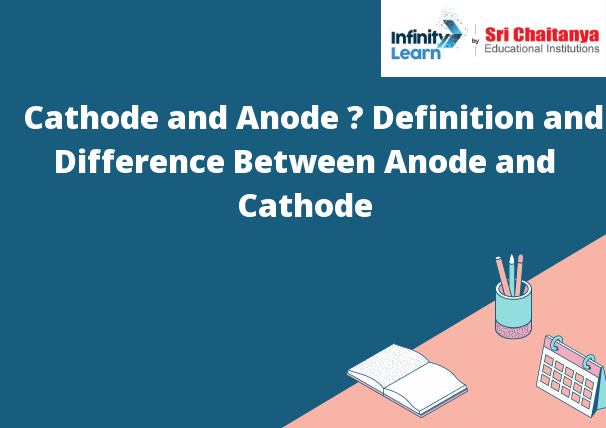Table of Contents
What are Anode and Cathode?
Cathode and Anode – Definition: An anode is an electrode through which electric current enters into a polarized electrical device. A cathode is an electrode through which electric current leaves a polarized electrical device.

Anode and Cathode Explained
In an electrochemical cell, an anode is the electrode at which oxidation occurs and a cathode is the electrode at which reduction occurs. Together, they form a galvanic cell or battery.
What is Cathode?
Cathode is the electrode through which current flows out of a device into the external circuit. Cathodes are usually negative with respect to an anode. A cathode is an electrode in an electrochemical cell or battery that is negatively charged and attracts positively charged ions or electrons. In an electrochemical reaction, the cathode is where reduction occurs, meaning that electrons are gained at the cathode.
What is Anode?
The anode is the electrode at which oxidation occurs. In an electrolytic cell, it is the electrode at which electrons are transferred to the electrolyte. An anode is an electrode in an electrochemical cell or battery that is positively charged and attracts negatively charged ions or electrons. In an electrochemical reaction, the anode is where oxidation occurs, meaning that electrons are lost from the anode and move to the cathode.
Difference Between Anode And Cathode
-
Here’s a table highlighting the key differences between anode and cathode:
Anode Cathode Definition The electrode where oxidation (loss of electrons) occurs during an electrochemical reaction. The electrode where reduction (gain of electrons) occurs during an electrochemical reaction. Charge Usually carries a positive charge. Usually carries a negative charge. Current Flow Electrons flow from the anode to the cathode. Electrons flow towards the cathode from the anode. Electrolytic Cell In an electrolytic cell, the anode is connected to the positive terminal (anode is the positive electrode). In an electrolytic cell, the cathode is connected to the negative terminal (cathode is the negative electrode). Galvanic Cell In a galvanic cell, the anode is connected to the negative terminal (anode is the negative electrode). In a galvanic cell, the cathode is connected to the positive terminal (cathode is the positive electrode). Oxidation/Reduction Anode undergoes oxidation (loses electrons). Cathode undergoes reduction (gains electrons). Product Generation Anode may generate anions or release gas. Cathode may generate cations or consume gas. Examples In a zinc-carbon battery, zinc acts as the anode. In a zinc-carbon battery, carbon acts as the cathode. It’s important to note that the behavior of the anode and cathode can vary depending on the type of electrochemical cell or specific context. However, the table above highlights the general characteristics and distinctions between anode and cathode in most electrochemical systems.
Charge on Anode and Cathode
- The anode is the electrode at which oxidation occurs, while the cathode is the electrode at which reduction occurs.
- In other words, the anode is the electrode where a substance loses electrons, while the cathode is the electrode where a substance gains electrons.
Reason Behind the Cathode as Negative and Anode as Positive
- The cathode is negative and the anode is positive because the anode is the positive terminal of a battery and the cathode is the negative terminal.
- Cathode rays are negatively charged. The anode is the positively charged electrode. The anode is at a higher potential than the cathode.
Charges of a Cathode and Anode of a Voltaic Cell
- The anode is the electrode at which oxidation occurs, while the cathode is the electrode at which reduction occurs.
- A voltaic cell is a device that uses a chemical reaction to create an electrical current. The cell has two electrodes, called the cathode and the anode. The cathode is the negative electrode and the anode is the positive electrode. The cathode is always made of a metal that forms a positive ion, such as zinc or aluminum. The anode is usually made of a metal that forms a negative ion, such as copper or magnesium.
- The cathode is always connected to the negative terminal of the battery, and the anode is always connected to the positive terminal of the battery. When the battery is connected to a circuit, electrons flow from the cathode to the anode. This creates a current that can be used to power devices.








